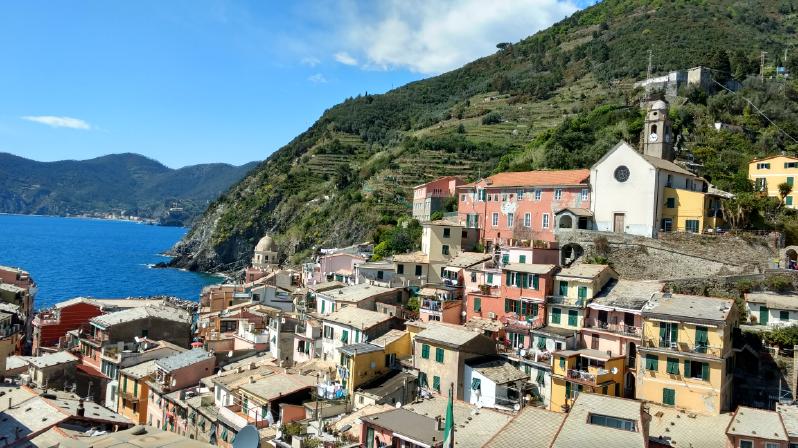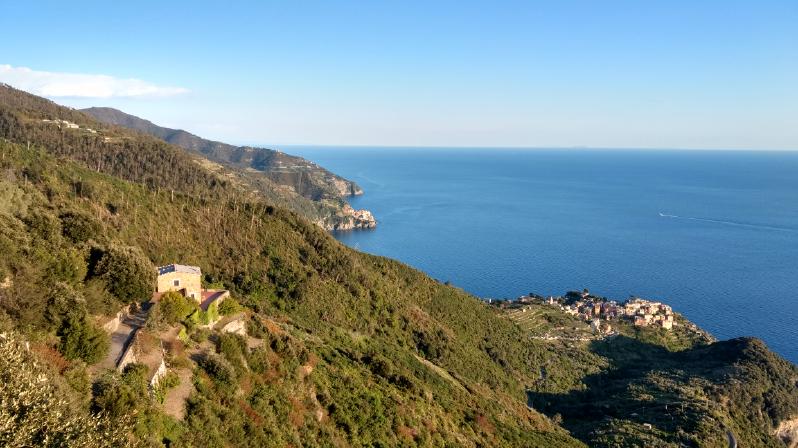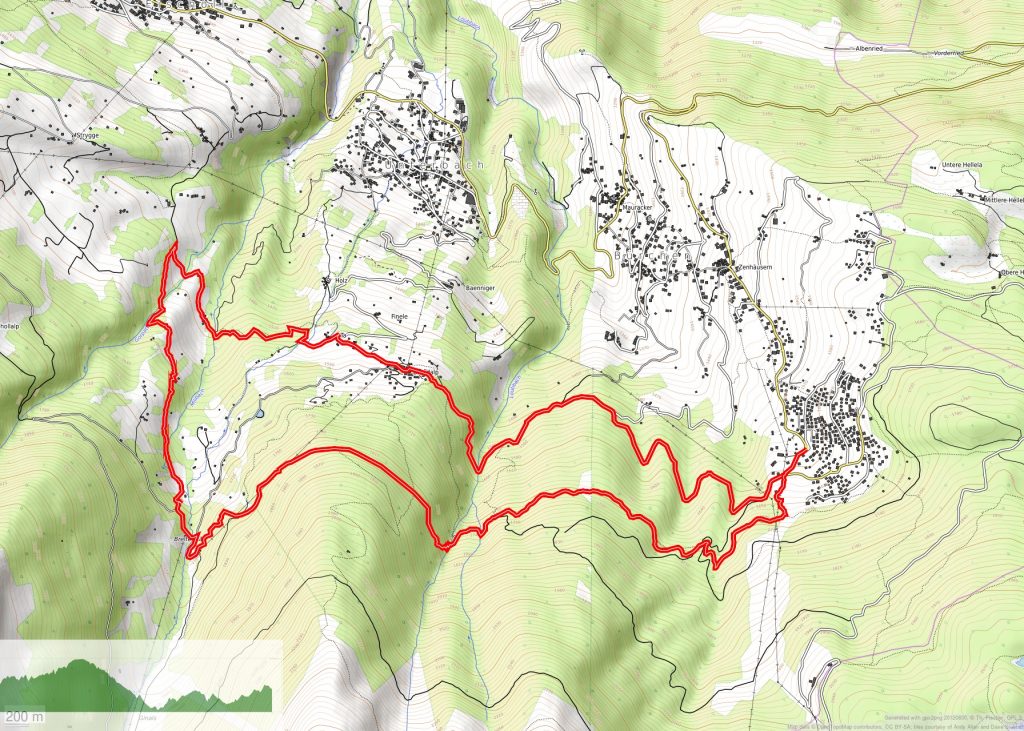A trip to the Mediterranean Sea and more….
Egg, 22nd September 2017: Attentive visitors to our web page should not have missed the fact that there were no new blog articles on this page in the last few months. Every few years (last time in 2012), we take the time to critically question the past, explore new ways and open up the horizon in general. This resulted in a trip to the Mediterranean Sea, and thus ultimately in the tour portal azurgo.ch. This blog is about this journey, about azurgo.ch and the new possibilities that result for our products.
Normally, these blogs are not about mixing professional and private things. As a customer, you are entitled to have us conduct ourselves professionally, and in the private sphere there is – besides a lot of professional obligations – also a private life. Private reconciliation to professional obligations has become no less important in recent years, but the opposite is true. To put it in a positive way, every job that needs to be done professionally can be solved during the holidays. On-site assignments are virtually unnecessary. It is essential to master the permanent availability via the Internet – both privately and professionally.
The Mediterranean Project
For this reason, we as a family have started to hike for a few weeks each year, and this year we have added a longer cycle tour to Graz. Initially, it was planned to explore Switzerland. Now we had already mastered the journey to Lake Geneva in 2014 and walked through almost the whole of Switzerland.
The question arose as to where the journey should continue. In 2015, we got stuck in Chamonix and searched for the shortest route to the Mediterranean. The shortest way to the sea was in Varazze. We did the tour in 2016, and because we liked the trip so much in 2016, we went on this year from Varazze to Florence. Those who hike have time, they enjoy the freedom to be slow. This contrasts best with the fast-paced life of computer science. It should be noted that all support requests — even during the hikes — could be handled without any problems.
At some point along the way the idea arose to create a blog from our experiences and adventures. Of course, we could have put the tours online somewhere, but the terms and conditions of the portals discouraged us from doing so. As an example here is the excerpt from a portal: “The user grants the provider the non-exclusive, content-related, spatially and temporally unlimited right to use works uploaded to the platform free of charge and as often as desired contentwise, spatially and temporally unlimitedly on all websites operated by the provider. The provider is entitled to present, publish, reproduce, disseminate, rent, digitise, store electronically, make available to internal and external users as well as to use the works in online and offline networks as well as to use them for customary advertising. The provider and the users of the platform are entitled to edit, shorten and change the works while respecting copyright.” Whoever takes the time to document tours under this premise and spends a lot of time on them does not want to lose all rights in the end.
The portal azurgo. ch
That’s why we started to build the portal azurgo.ch. The effort involved was far higher than we had initially imagined. Or let’s put it this way, in the end the demand was so high that it ran up to a high expenditure of time. Unlike other portals, we wanted to create a book at the end of our entire journey to the sea. In addition to the unspeakable terms and conditions of the top dogs, almost all portals fail because the tours cannot be published as a complete work.
We drilled out WordPress in such a way that we were able to create PDF brochures directly from the blogs. Now we were able to produce brochures cost-efficiently (we also found print shops that printed them cheaply in good quality), but the brochures with 50 or more pages did not look very inviting. No book printing is possible without a professionally designed spine. Although some self-publishing portals such as LuLu.com or BoD.ch offer a cover designer, published works in print are very expensive (approx. 20 francs per 100 pages).
Therefore, we needed a program to create book covers. Scribus is another open source program that we have been using for more than a decade. The art for our project was that we wanted to automate Scribus so that the entire design could be done at the touch of a button. The interaction between WordPress and Scribus led us into all the depths of Python programming. After all, Python is included in the standard scope of our ArchivistaBox as are the languages Perl and PHP.
And there’s something else we wanted done. In our portal it should be possible to generate a map section from a GPX track (route) with as little effort as possible. Now WordPress offers many plugins for presenting GPS data. These maps are usually created using a JavaScript library with the data from OpenStreetMap.org, and this should be a challenge when printing routes. With a few more jobs in the background, the maps are now completely automated for the web-view as well as for the published book. The basic data of the tour is also generated without manual entry in the background. In the past, we used to take a good fifteen minutes per tour by hand.
SelfPublishing with azurgo.ch
Now WordPress offers many great features so that third parties can edit certain pages and content themselves. We initially thought about opening the portal azurgo. ch in such a way that third parties within azurgo. ch could record individual contributions. But soon it became clear that WordPress’s MultiSite concept was much better and above all more powerful. With the MultiSite concept, users register once on our portal azurgo. ch and then receive their own homepage at azurgo. ch/something.
Anyone who takes the trouble to record tours and create tour books from them will be confronted with the question of whether the created works should also reach the trade. Anyone publishing on LuLu.com or BoD.ch, for example, cedes their rights in full, while anyone wishing to publish a printed book with an ISBN number pays proud prices (approx. 20 francs for 100 coloured book pages) for private copies alone. For this reason, we have created an opportunity for the azurgo.ch portal to publish the works at very moderate conditions with an ISBN number.
But we want to go one step further, because of our own experiences we learned that the creation of tours and hiking with the navigation system or mobile phone will not always work without some practice. If you can’t find your way with your mobile phone at the end of the day, you’re taking a small risk. Especially in the mountains it would be extremely dangerous not to arrive on time in the evening. That’s why we have created a course offering for navigation with GPS tracks. And if you want to create your own tours, you will also find a course to do so. And because we think QMapShack is really great for this, but not for searching the map and route material, we have created the product ArchivistaBox Bietschhorn in the shop at azurgo.ch.
Great benefit for the ArchivistaBox
That brings us to the central point, what does this mean for the customers of ArchivistaBoxes to date? In addition to the new ArchivistaBox Bietschhorn, all ArchivistaBox customers can initially create their own homepage on azurgo.ch free of charge. Thanks to the integration of WordPress on our ArchivistaBox, this becomes much more flexible than before. Thus, we can now offer professional web shop solutions (including credit card payments) at fixed prices, giving the ArchivistaBox — if required — an extremely contemporary appearance.
Furthermore, we will also use the solution realized for the azurgo.ch portal on the archivista.ch homepage. This will enable us to create and publish the documentation for our ArchivistaBox products centrally and promptly. It has not yet been decided whether WordPress will be installed on all ArchivistaBoxes by default in the future. The chances are good, because the solution is already technically implemented on the portals azurgo.ch and archivista.ch.
It is well known that many roads lead to Rome. In the proverbial sense, we have hiked privately to Florence so far. Even if the way to Rome is not exactly a stone’s throw away, we are nevertheless confident — professionally and privately — to travel the road to Rome with much joy and sun soon.





